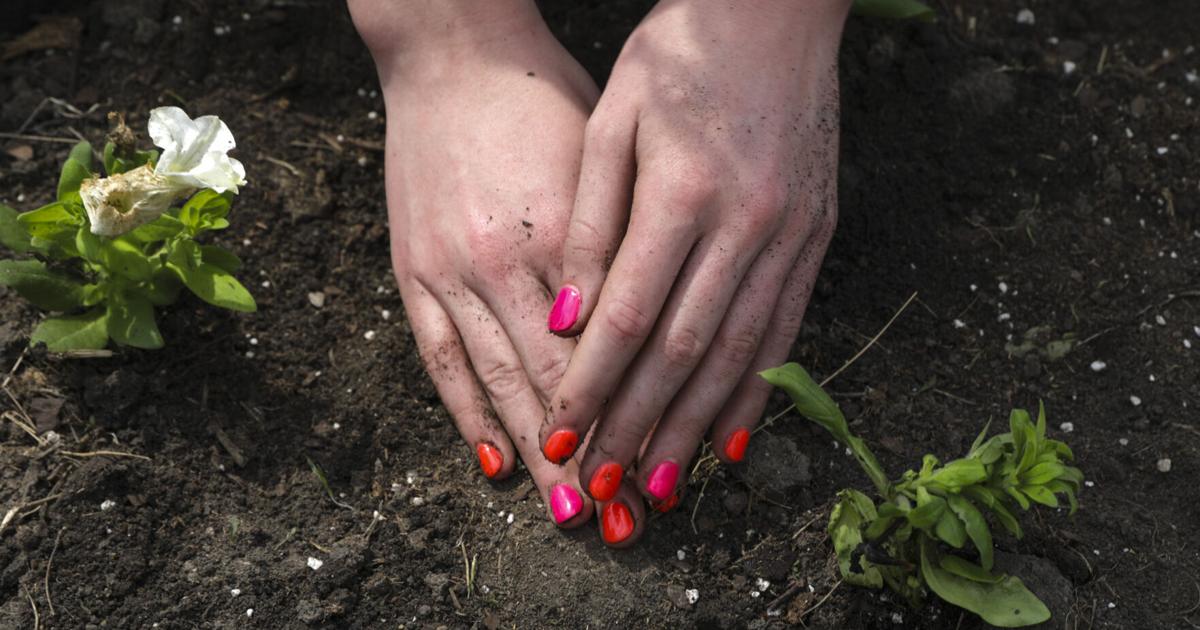
We have the official state soil | Master Gardener | Home and Garden
Did you know that there is a state soil, just like the state flower (the poppy) and the state animal (the bear)? Yes, the state soil of California is called “San Joaquin” soil and was officially designated so in 1997. The Central Valley has more than a million acres of “San Joaquin” soil. This is not surprising as our main export from the Valley is food and other agricultural products. But I am sure that the land appreciates being recognized for its importance to the welfare of California.
Soil (please do not call it dirt) is a complex world made up of organic matter like bugs and worms and decomposing plants, minerals of various sizes (more about that important feature later), air, and water. In this article I would like to talk about this vital part of the garden. I am taking some my information from the excellent book, The Home Orchard by C. Ingels, P. Geisel, and M. Norton, published by the University of California. It is highly recommended for people who have deciduous (meaning they lose their leaves in the fall) fruit and nut trees. It is one of the books used often by the Master Gardeners for information in educating the public and in their own orchards. I also refer people who are interested in this and other subjects about gardening to the Integrated Pest Management site (http://ipm.ucanr.edu/) maintained by the University of California Agricultural and Natural Resources. This site is a cornucopia of information on all things gardening.
Soil is made up of layers called Horizons, each with unique features that differ from the others. The top horizon is called the topsoil. This soil is usually dark and is made up of living things like bugs and worms, fungi and bacteria that coexist with plants and can most often assist them. It also contains decomposing organic matter that nourishes the plant. The topsoil is not very deep, several inches to a few feet, and hosts the majority of plant roots. Under the topsoil is the subsoil horizon which accumulates clay particles, minerals and salts that have leeched down. It has less organic matter and is host to the deeper roots of plants like trees. The lowest horizon is called the regolith and is made up of rocks and has little organic matter available. Roots are not found in this layer. So, in your gardening, unless there has been deep tilling or digging that has disrupted these horizons, the topsoil is what you have to work with.
The minerals in soil are defined by their size. Sand particles are large enough to be seen by the naked eye. Silt particles are considered the “medium” size and are too small to be seen individually. Clay particles are so small they can only be seen through a microscope. The texture of a soil is made up of the relative proportions of these three sizes. Soil scientists have defined 12 types of textures and put them in a diagram that gives relative percentages of the differing particles. This complex picture is a start for people serious about understanding soil types, but an easier way that anyone can learn and use is called the “feel test” for soil texture. There are many resources on how to do this test but for those who are “visual learners,” like me, I will refer to the superb You-tube video from the Kansas State University Research and Extension: https://www.youtube.com/watch?v=UKT9RBIkeKc
This video will show you how to test your soil for a rough estimate of the texture of the soil and is also excellent if you crave some time playing in the mud.
Soil can have many physical and chemical problems. A major topic is pH, which is how acid or alkaline the soil is. An inexpensive kit for testing the pH is widely available in most nurseries and home improvement centers. It features simple testing for pH, Nitrogen, Phosphorus, and Potassium. The Ventura County Extension advisors Jim Downer and Ben Faber tested five commercially available kits against the results obtained by UC Davis Analytical Laboratory. The results are outlined in their article (https://ucanr.edu/sites/ucceventura/files/35923.pdf), but the bottom line is that home test kits such as Rapidtest™ are easy to use and are more than 90{7e5ff73c23cd1cd7ac587f9048f78b3ced175b09520fe5fee10055eb3132dce7} accurate.
The soil can also have excess salts and elements like Sodium, Boron, or Chloride. There are soil laboratories in our area that can give a more complete analysis. If you are serious about knowing the details of your soil composition, call your local California Extension office to get a referral. If you have soil that is impossible to amend or contaminated with chemicals, you can still have healthy plants by putting them in raised beds.
So be good to your State Soil here in the San Joaquin Valley by testing, amending with compost if needed, and using mulch to retain moisture and reduce weeds.
The Master Gardeners will be available to answer your questions at a few select locations in the next few months!
Visalia Farmer’s Market- 1st and 3rd Saturdays, 8-11 a.m., 2100 W. Caldwell Ave (behind Sears)
Hanford Farmer’s Market – 4th Thursday – 5-9 p.m.
Call us: Master Gardeners in Tulare County: (559) 684-3325, Tuesday and Thursday, 9:30-11:30; Kings County: (559) 852-2736, Thursday Only, 9:30-11:30 a.m.
Instagram at: @mgtularekings
